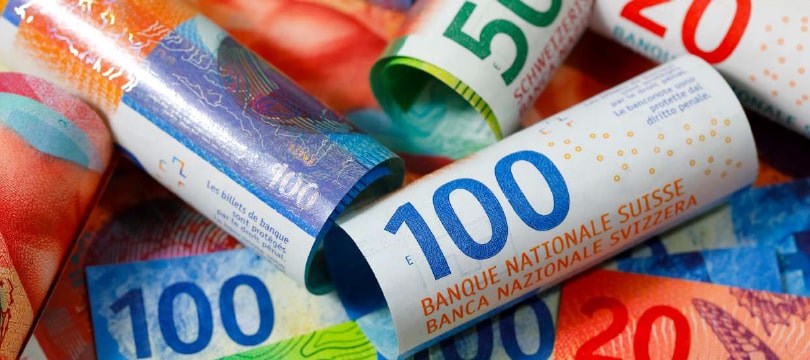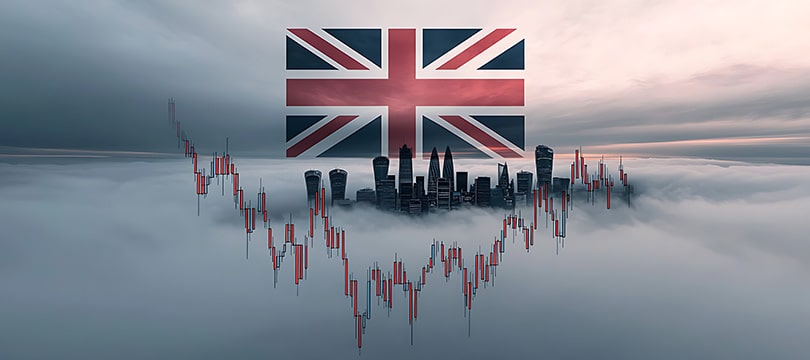How can a currency strengthen even as the central bank lowers rates? Shouldn't it be the opposite?
Anyone who deals with the Swiss franc is asking this question. The Swiss currency, once again, defies the most intuitive rules of finance and demonstrates unexpected strength, even in a context of expansionary monetary policy.
We'll discuss it here. We will analyze the latest movements of the franc and examine them in light of the Swiss central bank's moves. Finally, we will answer the question: can the Swiss franc, by virtue of all this, be considered a safe haven asset?
The Fundamentals of the Swiss Franc
Before answering the question, it is essential to understand the economic and financial bases of this currency, its fundamentals. In fact, the strength or weakness of a currency does not only depend on interest rates, but also on a set of structural factors.
Here are the main fundamentals that make the Swiss franc what it is: one of the most stable and appreciated currencies in the world.
- Political stability and neutrality. Switzerland enjoys a long tradition of internal stability and international neutrality. This makes the country a safe harbor in times of geopolitical or economic crisis. Investors know that capital held in Switzerland is sheltered from conflicts or unpredictable political decisions. This, clearly, impacts the currency, which is a bit of a reflection of a country's strength.
- Strength of the banking system. The Swiss banking system is solid, highly regulated, and oriented towards confidentiality and prudence. Confidence in Swiss financial institutions attracts investors from all over the world, particularly in times of global uncertainty.
- Current account surplus. Switzerland exports more than it imports, especially in the pharmaceutical, precision instruments, and financial services sectors. This trade surplus ensures a constant demand for Swiss francs, supporting its value.
- Low structural inflation. Switzerland has always been a country with low inflation. This characteristic preserves the purchasing power of the franc over time and makes the currency more attractive compared to those subject to monetary erosion.
These elements contribute to creating a sort of natural shield for the Swiss currency, capable of defending its value even in apparently unfavorable conditions.
What Happened with the Swiss Franc
In the first half of 2025, the Swiss National Bank (SNB) cut interest rates, bringing the key rate from 1.50% to 1.25% in March, and subsequently to 1.00% in June. A non-trivial move, which attracted the attention of financial operators for two reasons:
- Switzerland was the first major advanced economy to cut rates
- The ECB and the Fed were showing great caution at that time (and in reality, they still are). Therefore, the SNB acted in advance.
The cut was not made to stimulate a crisis-ridden economy, but to counter inflation that was too low, even close to zero. The SNB acted preventively to avoid a deflationary scenario, and to maintain a minimum of competitiveness for exports.
In theory, lowering rates should reduce the strength of a currency: capital moves to countries where yields are higher. In practice, however, this is not what happened.
The Reasons for an Increasingly Strong Swiss Franc
Despite the SNB's cuts, the Swiss franc continued to strengthen, surprising many analysts. The EUR/CHF exchange rate fell below 0.95, while the dollar struggled to exceed 0.90 CHF. But how can this phenomenon be explained? Here are some possible explanations.
- The relative strength of the Swiss economy. Even with lower rates, the Swiss economy continues to show solid indicators: low unemployment, healthy export sector, balanced public budget. Structural values always outweigh contingent values.
- Inflation differential. While Swiss rates have fallen, inflation in Switzerland is much lower than in other Western countries. This means that the real return on Swiss assets (i.e., net of inflation) is often higher than in other countries, despite lower nominal rates.
- Capital inflows for geopolitical reasons. Tensions in Ukraine and the South China Sea, as well as the instability of some emerging economies, have prompted many institutional investors to seek a safe haven. The Swiss franc, once again, was among the first to benefit.
- Expectations of cuts by others. The fact that the SNB cut first has shifted attention: markets have begun to discount upcoming cuts by the ECB and Fed as well, thus reducing the relative attractiveness of other currencies. Result? CHF, even with lower rates, remains competitive.
- Automatic safe haven effect. There is a mechanism of self-feeding type. In moments of uncertainty, many funds buy Swiss francs by default, regardless of the SNB's decisions. This psychological effect still holds great weight in 2025.




